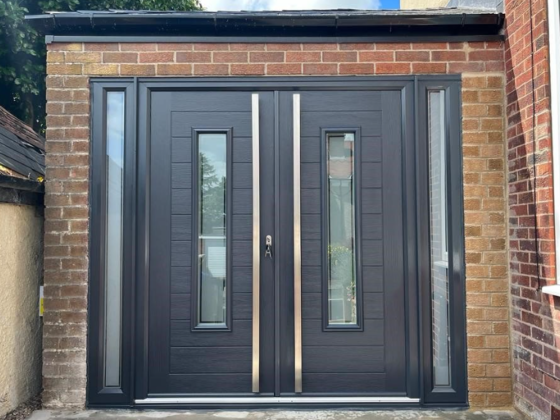Table of Contents Show
The allure of a loft conversion lies not just in its ability to add an extra room but in its transformative magic. It’s about tapping into unused potential, converting a once-neglected space into the heart of a home.
But how does one journey from a mere idea, a vision of possibilities, to the reality of a completed, functional, and aesthetically pleasing loft space? It’s a process filled with decisions, challenges, and moments of inspiration.
This guide is designed to shed light on this transformative journey, offering insights, advice, and a roadmap. Whether you’re at the dreaming stage or on the brink of actualization, our goal is to assist and empower homeowners to navigate the multifaceted process of loft conversion with confidence and clarity.
Follow link https://visionarylofts.co.uk/ to learn about Visionary Lofts
Understanding the Potential of Your Loft Space
When considering a loft conversion, it’s crucial not only to be swept away by the exciting possibilities but also to have a grounded understanding of the existing space and its potential. Here’s how to gain a comprehensive perspective:
Assessing the Current State: Space, Structure, and Suitability
Space: Begin by measuring the loft’s dimensions. How much headroom is available? Is there enough space to comfortably move around once the conversion is complete? Remember, certain building regulations dictate minimum heights for habitable rooms.
Structure: Evaluate the underlying structure of your loft. Traditional framed type roofs are typically easier and less costly to convert than modern truss roofs. Moreover, the condition of the roof, whether it’s leaky or in good repair, can also impact the conversion’s complexity and cost.
Suitability: Not every loft is suitable for every type of conversion. The loft’s shape, size, and structure will influence whether it’s best suited as an extra bedroom, an office, a playroom, or even a mini studio apartment.
The positioning and number of windows, for instance, can determine how much natural light the space will receive, which can influence its best use.
Read Also:
Realizing the Potential: What Could the Loft Become?
Vision Casting: Allow yourself to dream. Could this space become a serene bedroom, a bustling home office, or perhaps a cozy reading nook? Consider your home’s current needs. Do you require an extra guest room, a play area for the kids, or maybe a dedicated workspace?
Flexibility in Design: While it’s essential to have a clear vision, it’s equally crucial to remain flexible. Sometimes, the loft’s quirks—like sloped ceilings or exposed beams—can be turned into unique design features.
Importance of a Feasibility Study: Knowing Limitations and Possibilities
Professional Insight: Before diving headfirst into a conversion, it’s wise to conduct a feasibility study, ideally with the help of a professional. Such an assessment will give you a clear picture of what’s possible and what’s not based on structural considerations, local regulations, and budget constraints.
Understanding Limitations: Every loft has its constraints, whether they’re related to size, structure, or regulations. A feasibility study helps homeowners set realistic expectations and avoid costly missteps down the road.
Highlighting Possibilities: On the flip side, a feasibility study can also unveil potential you hadn’t considered. Perhaps there’s an opportunity to add a dormer for additional space or utilize a specific design feature that would elevate the finished conversion.
In essence, understanding your loft’s potential is the foundation upon which successful conversions are built. By combining a clear assessment with vision and professional guidance, homeowners can embark on a conversion journey that not only adds space but also significant value and character to their homes.
Crafting Your Vision: Planning and Design
Defining the Loft’s Purpose:
Before diving into design details, ascertain the purpose of your conversion. Is it going to be a tranquil bedroom, a bustling home office, a creative studio, a children’s playroom, or perhaps a multifunctional space?
Considering Design Aesthetics:
The loft’s design should complement the rest of the house. Do you envision a sleek modern space, a room steeped in traditional elegance, or a harmonious fusion of old and new?
Collaborative Brainstorming:
Engage with architects or interior designers. Their expertise can help refine ideas, ensuring that your vision is beautiful and feasible.
Regulations, Permissions, and Paperwork
Understanding Planning Permissions:
While not always needed, certain loft conversions, especially those altering the building’s exterior, may require planning permission. Familiarize yourself with local regulations.
Building Regulations:
These ensure that the loft conversion is safe, accessible, and energy-efficient. Aspects like fire safety, insulation, and structural integrity fall under this.
Addressing Special Considerations:
For homes that are listed or situated in conservation areas, additional restrictions and requirements might apply.
Selecting the Right Team
Why Expertise Matters:
A loft conversion is a significant undertaking. Trusted professionals can ensure quality work that stands the test of time.
Criteria for Choosing:
Examine potential teams by their experience, customer reviews, portfolio quality, and personal recommendations.
Collaborative Dynamics:
The process should be a partnership. Ensure open communication channels exist and that both parties are aligned in their vision and approach.
Budgeting and Financing Your Loft Conversion
Estimating Costs:
Calculate expenses for structural modifications, quality materials, labor, and the final finishing touches.
Hidden Expenses:
Always set aside funds for unforeseen challenges. Whether it’s an electrical issue or a structural hiccup, contingencies are vital.
Exploring Financing Options:
Consider using savings, taking out a loan, or exploring specialized home improvement financing solutions.
The Conversion Process: Step by Step
Initial Preparations:
This involves securing the site and making any necessary structural adjustments.
The Main Build:
The core phase is where structural work, flooring, roofing, and window installations happen.
Utilities and Amenities:
Incorporate essentials like electrical circuits, plumbing systems, effective insulation, and ventilation mechanisms.
Final Touches:
This encompasses interior design work, selecting furnishings, and adding personal decorative touches.
Addressing Challenges and Hurdles
Common Issues:
From structural surprises to budget overflows, loft conversions can come with challenges.
Proactive Solutions:
Anticipate common problems and have strategies ready for tackling them.
Real-life Anecdotes:
Share tales of obstacles homeowners faced during their conversion and the innovative solutions that resolved them.
Maintaining and Maximizing Your New Space
Post-conversion Care:
Offer tips on maintenance routines that will ensure the loft’s longevity.
Making the Most of the Loft Space:
Provide design hacks and organizational ideas to maximize space utility.
Periodic Checks and Updates:
Emphasize the need for regular assessments to keep the loft in top shape.
Showcasing Successful Loft Conversions
Inspirational Stories:
Share heartwarming stories of homeowners who successfully transformed their attics.
Visual Delights:
Feature before-and-after photos of remarkable loft makeovers.
Lessons Learned:
Provide invaluable advice and insights from those who have gone through the journey.
Conclusion
Reflect on the rewarding experience of converting an underutilized attic into a functional and beautiful space. With the knowledge and insights provided in this guide, readers can confidently embark on their loft conversion journeys, knowing the challenges, joys, and immense satisfaction awaiting them. The final message? Every homeowner has the potential to turn their vision into a tangible reality.










